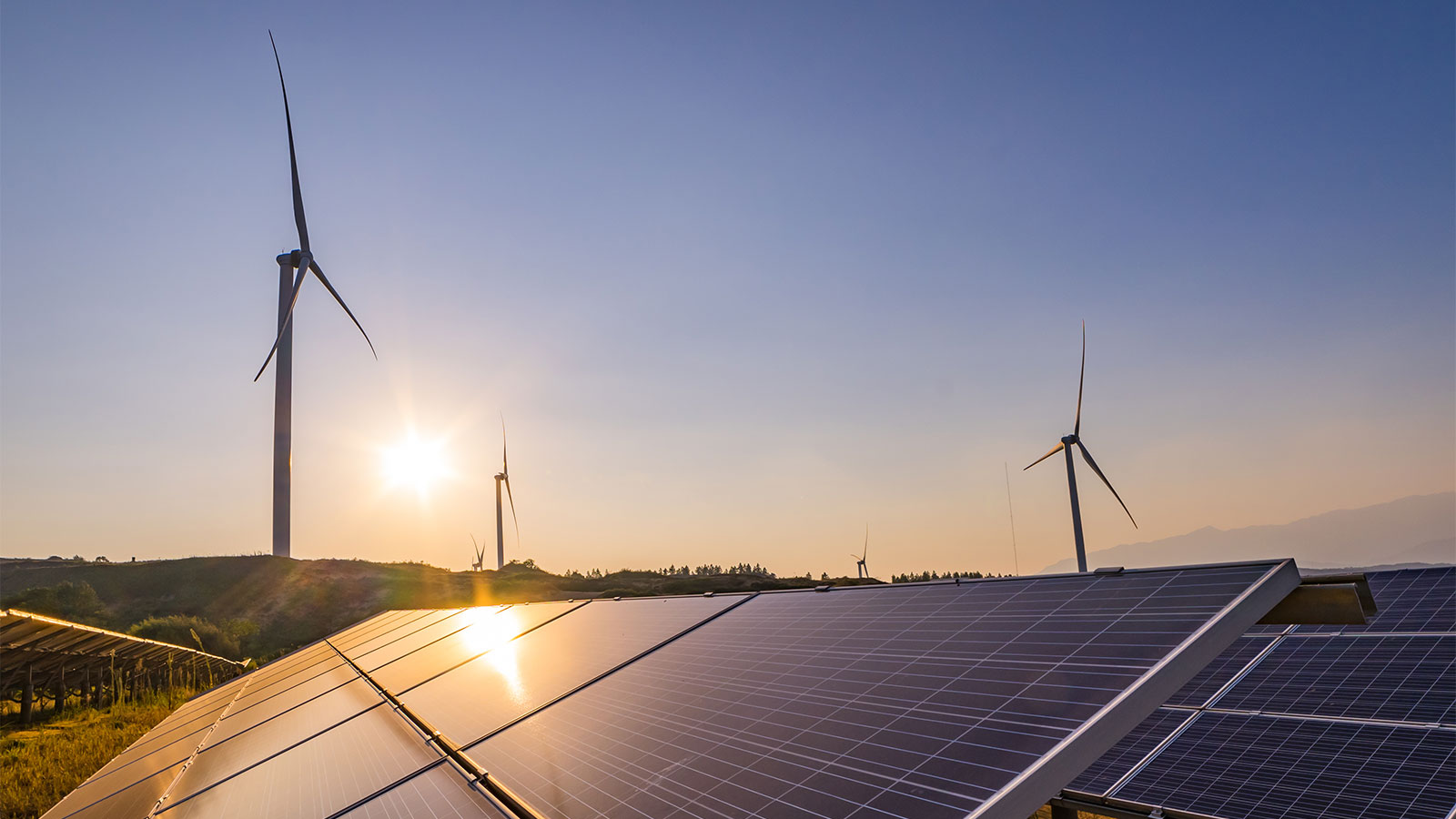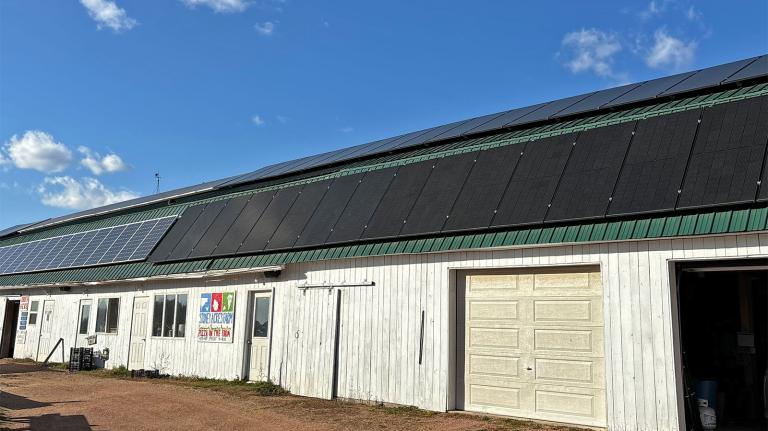Moving away from fossil fuels and increasing the use of renewable energy from wind and solar is essential to combat the climate crisis. But beyond the obvious environmental impacts, a clean energy transition can provide financial and health benefits too.
In 2020, more energy came from renewable sources than coal and nuclear power for the first time on record. This progress has been supported by policies like renewable portfolio standards—legislation designed to increase the use of renewable energy sources for electricity generation—as well as clean energy standards, which require a percentage of electricity to come from low-emitting energy sources, such as nuclear. By the end of 2021, 31 states and the District of Columbia added or updated their energy standards—with Washington D.C. going as far as committing to draw 100% of their energy from renewable sources by 2032, one of the country’s most aggressive targets.
As a result, according to the EPA, just 10 percent of the U.S.’s total energy consumption came from coal in 2020, the lowest since 1949. Yet it’s essential to continue this trend: A report by the International Renewable Energy Agency found that eliminating current coal-fired energy would save the U.S. $32 billion annually, reducing carbon dioxide emissions by three gigatons. It would also mark a key milestone in phasing out our use of coal in time to meet commitments made in the 2015 Paris Agreement.
The next step is for states to prioritize how to make these transitions more equitable. Illinois, for example, is not only the first in the Midwest to commit to a carbon free power sector by 2045—their pledge also includes a focus on creating thousands of jobs in communities of color.
Saving green by going green
Meeting these ambitious goals will require additional government involvement but will also unlock significant national economic benefits, says David Wooley, director and lecturer at the school for environmental public policy at UC Berkeley. “The cost of renewable energy has declined so fast that many people aren’t aware of it—and this includes governments and big corporations,” Wooley says. A 30-year veteran in electric power regulation, climate, and policy reform, Wooley was a corresponding author on the Goldman School of Public Policy’s 2035 Report, released in 2020 to spread awareness about the decline in renewable prices—and the policy and recovery efforts needed to further reduce emissions and increase jobs.
“If you fully take into account the cost decline in renewables and batteries, we calculated a 90 percent decarbonization of the electric power sector by 2035 at no cost above what the current costs are,” Wooley says. On a national scale, transitioning away from fossil fuels and towards clean energy can offer economic benefits as significant as its environmental ones.
Meanwhile, the climate crisis is accelerating, and the argument for clean energy grows stronger each time Mother Nature delivers a costly storm. Last year, the global cost for weather disasters was $329 billion dollars—$23 billion of which occurred in the United States. As the costs of recovery increase, it’s essential that our new climate roadmap includes planning for future energy infrastructure.
Cleaner energy also means healthier, happier families
The decisions we make today about energy have consequences far beyond just the cost of power. According to a 2019 study published in the journal Environmental Research Letters, switching to renewable energy could also potentially save trillions of dollars in healthcare costs and reduce mortality. That’s because coal plants spew a plethora of harmful substances into the air, including nitrogen oxide, mercury, and sulfur dioxide. Exposure to these toxins can cause a host of health issues, including lung cancer, respiratory, and cardiovascular disease.
But to ensure a green energy transition is truly equitable, Wooley stresses that addressing job losses, increasing affordable public transportation, and rethinking land use are crucial priorities for communities throughout the U.S.
“There’s an equity issue for transitioning workers in power plants and coal production,” Woolsey says. But, he suggests, “We can target economic development and job creation in those areas, to anticipate where job losses will occur. What’s needed in West Virginia is different from Southern Illinois, and in California. The government has a really clinical role to play over the long term to plan for this.”
So far, the Biden administration has included employment transitions in its clean energy plans. Biden’s 2030 greenhouse gas pollution act, for example, has provisions to create millions of union jobs, while ushering in a carbon-free power sector no later than 2035.
To do so, Woolsey explains, we’ll need to deploy both solar and wind energy where they are most suitable. In the D.C. region, energy will likely be produced entirely by the sun, while mid-Atlantic and Midwestern states have more potential to use wind farms—and many places will rely on both. “Wind and solar are often complementary to each other in terms of meeting the needs of individual grids or cities,” Wooley says. “We’re seeing a rapid expansion of both technologies.”
While there are significant national benefits to a transition to renewable energy, there’s currently no national plan: Biden’s hallmark Build Back Better Act has stalled in Congress. This means it may be up to state and local governments—as well as individual consumers—to support this transition.
The good news is that, in the meantime, there are ways that people can take action to help accelerate this transition—without relying on government action. Companies like CleanChoice Energy are already helping consumers choose renewable energy for their homes. “CleanChoice Energy gives people an easy way to play a role in the transition towards clean energy, by allowing consumers to choose 100% clean, renewable energy from wind and solar for their homes,” says its CEO and founder, Tom Matzzie.
It will take an all-of-the-above approach to reach these energy goals. But by choosing to commit to clean energy, a safer and healthier future is well within our reach.
CleanChoice Energy is a cleantech company that empowers people and businesses to easily access climate solutions. CleanChoice uses data-empowered technology to offer consumers easy, impactful climate solutions so they can cut emissions, support renewable energy and live cleaner lives. Founded in 2012, CleanChoice has become one of the fastest-growing businesses in America, as ranked on the Inc 5000 and Deloitte’s Technology Fast 500™. CleanChoice Energy is a Certified B Corporation and is certified with the highest available rating by Green America’s Green Business Network. For more information or to become a clean energy customer, visit CleanChoiceEnergy.com.



